To my other TR6 pages
August 32, 2016
Horns
[Click the pics for a larger view]
The
Lucas 9H "Windtone" horns on the TR6 were apparently fairly ubiquitous
from the early sixties through at least the seventies.
They were even used on some European motorcycles. The TR6
used two 9H units--one "High Note", and one "Low Note", the "notes"
being roughly a major third apart.
My
horns were weatherbeaten and dirty, and neither of them worked when I
connected them to a power supply. I could get a sort of a grunt
out of one of them, but the other was totally inert. As a first
diagnostic step, I measured the resistance between the terminals on
each horn. The totally dead one read as an open circuit until I
rapped it on the bench a few times. It finally showed about 12
ohms, but still wouldn't produce any sound. The other horn
measured about 0.5 ohms--pretty close to factory spec, and was trying,
but couldn't manage a proper honk.
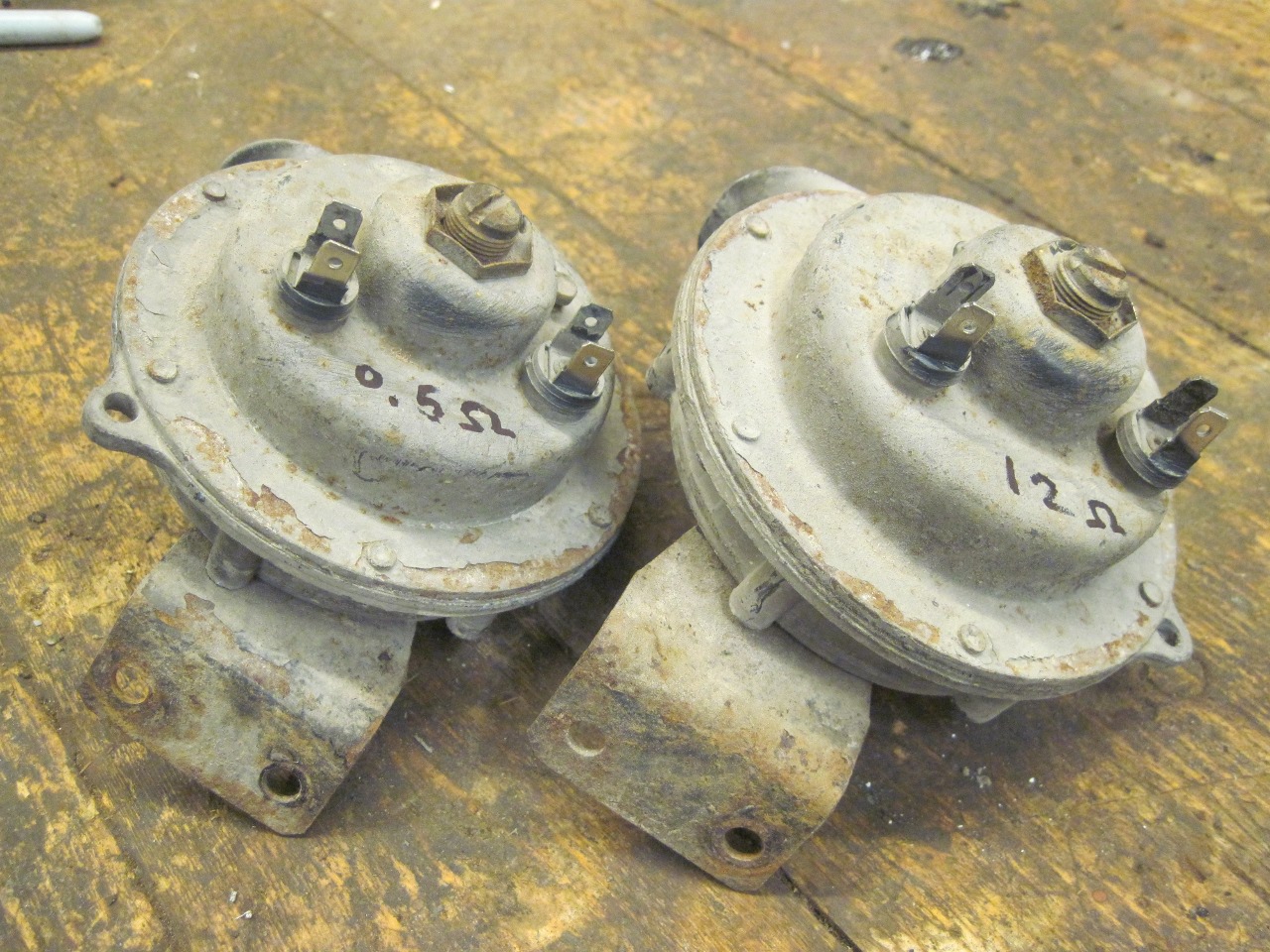
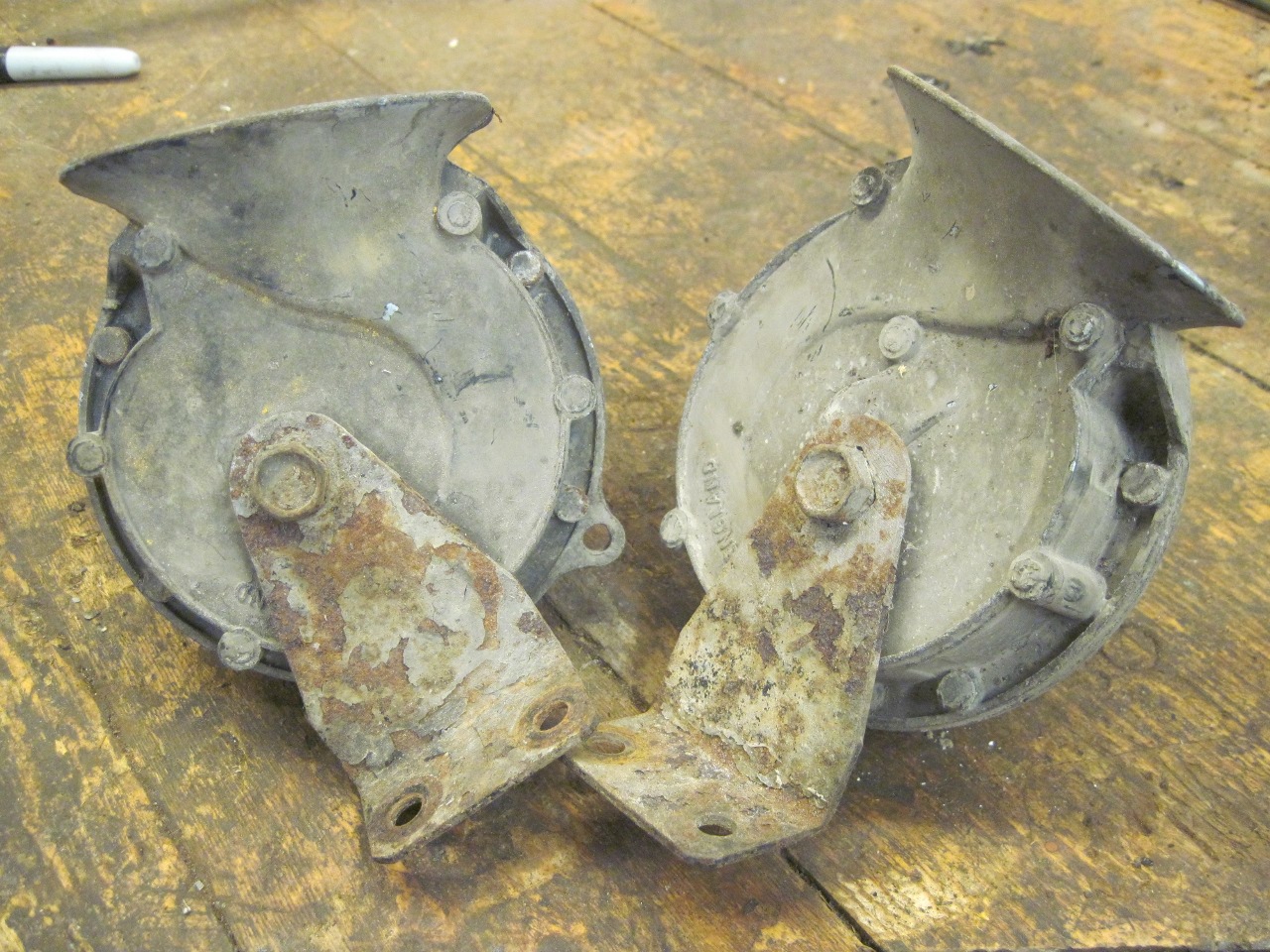
Now,
generic replacement horns, or even reproduction Windtone horns are not
all that expensive these days, and that would have been a
perffectly reasonable way to go. However, I had in front of
me on the bench two original horns that I believed had a very good
chance of being revived, given a few hours and a little tenderness.
These
horns weren't meant to be disassembled, but are just held together with
six aluminum rivets, which doesn't present much of a deterent.
Undoing the rivets revealed three major parts--a pot metal
casting that forms a coiled horn, a metal diaphragm, and an assembly
that includes a coil of wire and a set of electrical contacts. It
also revealed a lot of white powder--probably a corrosion product of
the pot metal and moisture. The diaphragm is attached to an iron
slug at its center. This slug extends into the core of the coil.
When power is conected to the horn terminals, current flows
through the contacts, and through the coil. The resulting
magnetic field pulls the slug further into the core against the
springiness of the diaphragm. At a certain point in its motion, a
fiber ring on the slug hits a finger on the contacts, and separates
them, breaking the current path. The magnetic field collapses,
and the slug and diaphragm spring back, which allows the contacts to
touch again. This cycle happens hundreds of times per second, at
a rate determined by the mass and springiness of the moving parts.
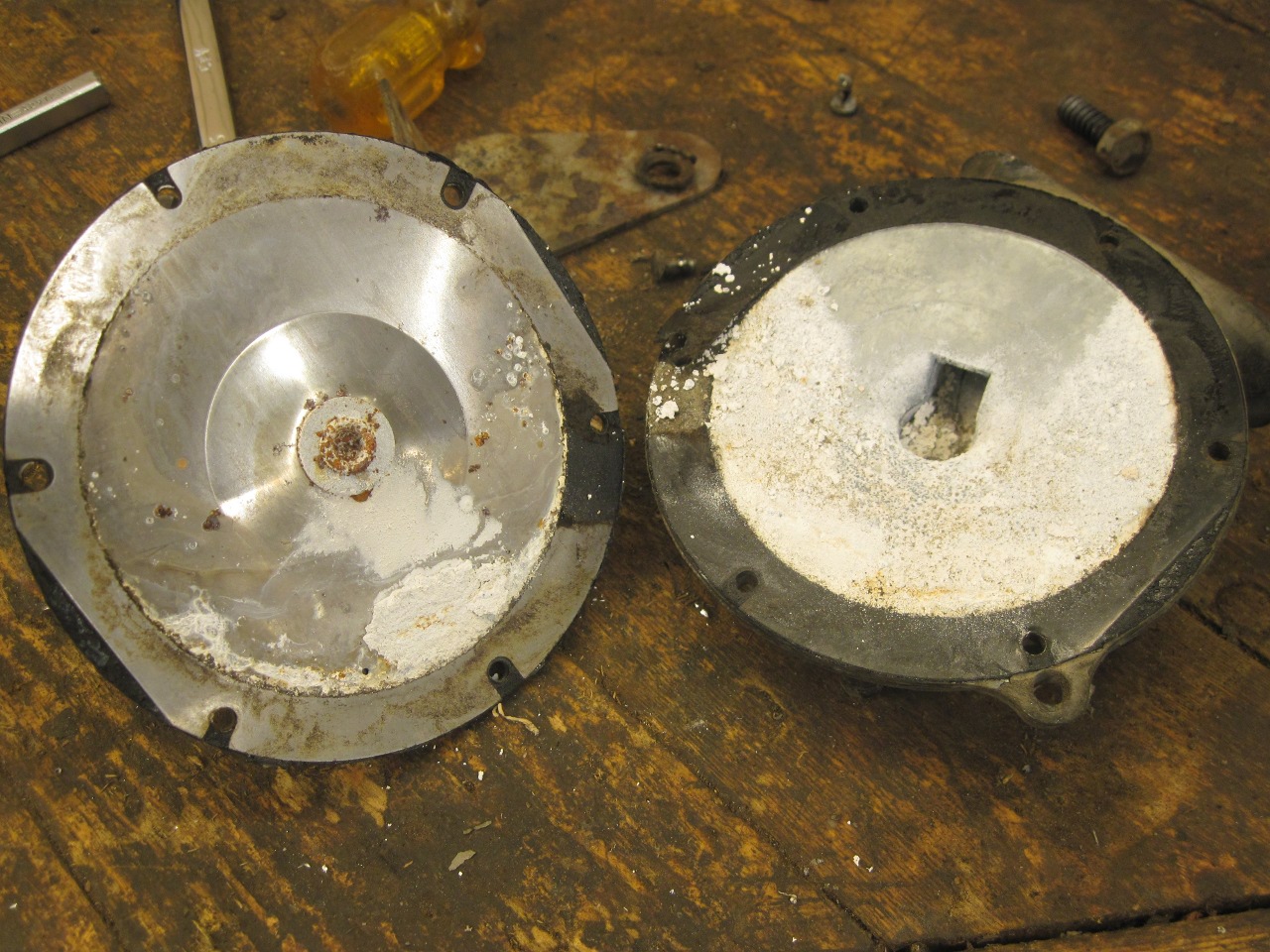
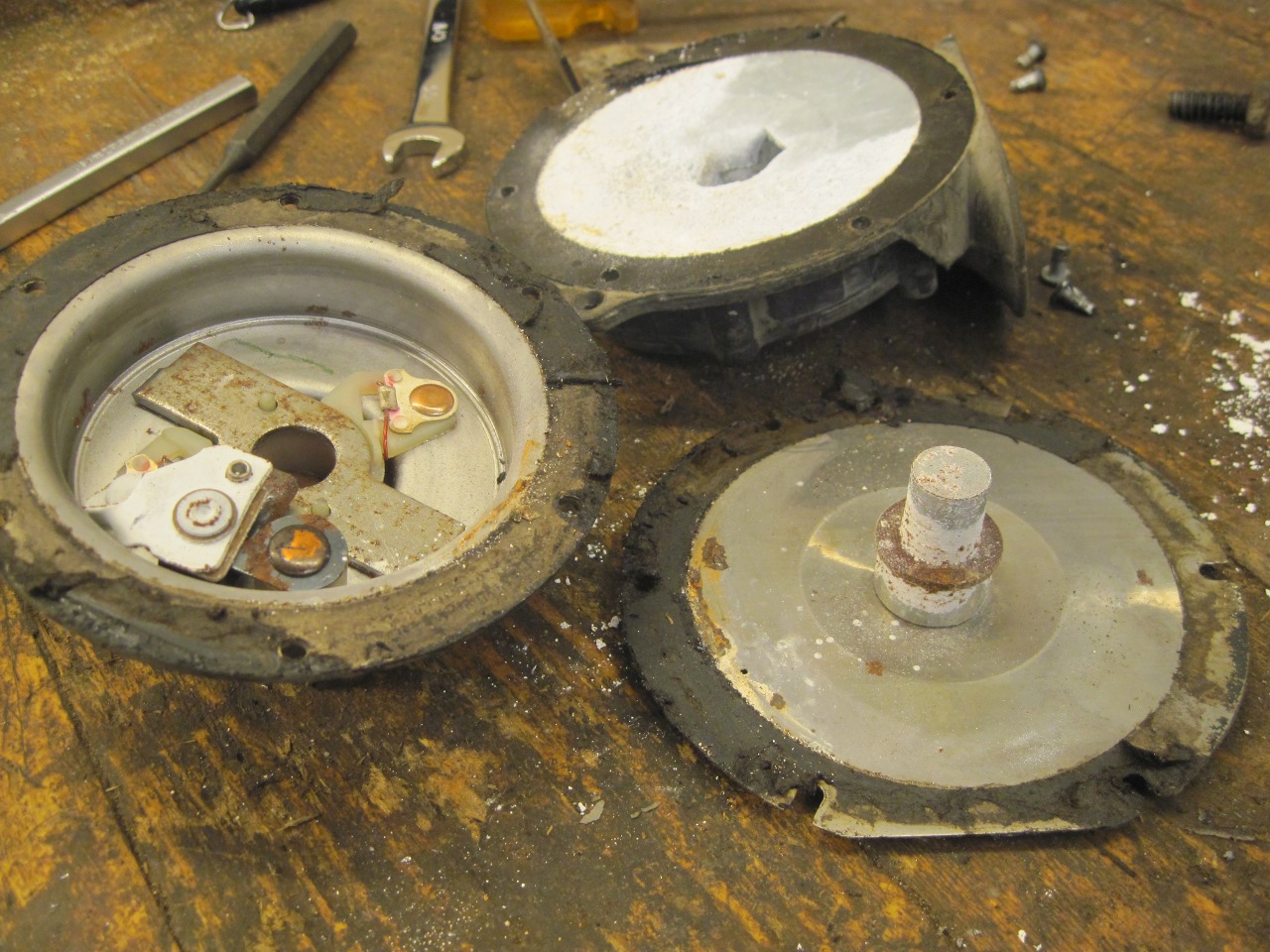
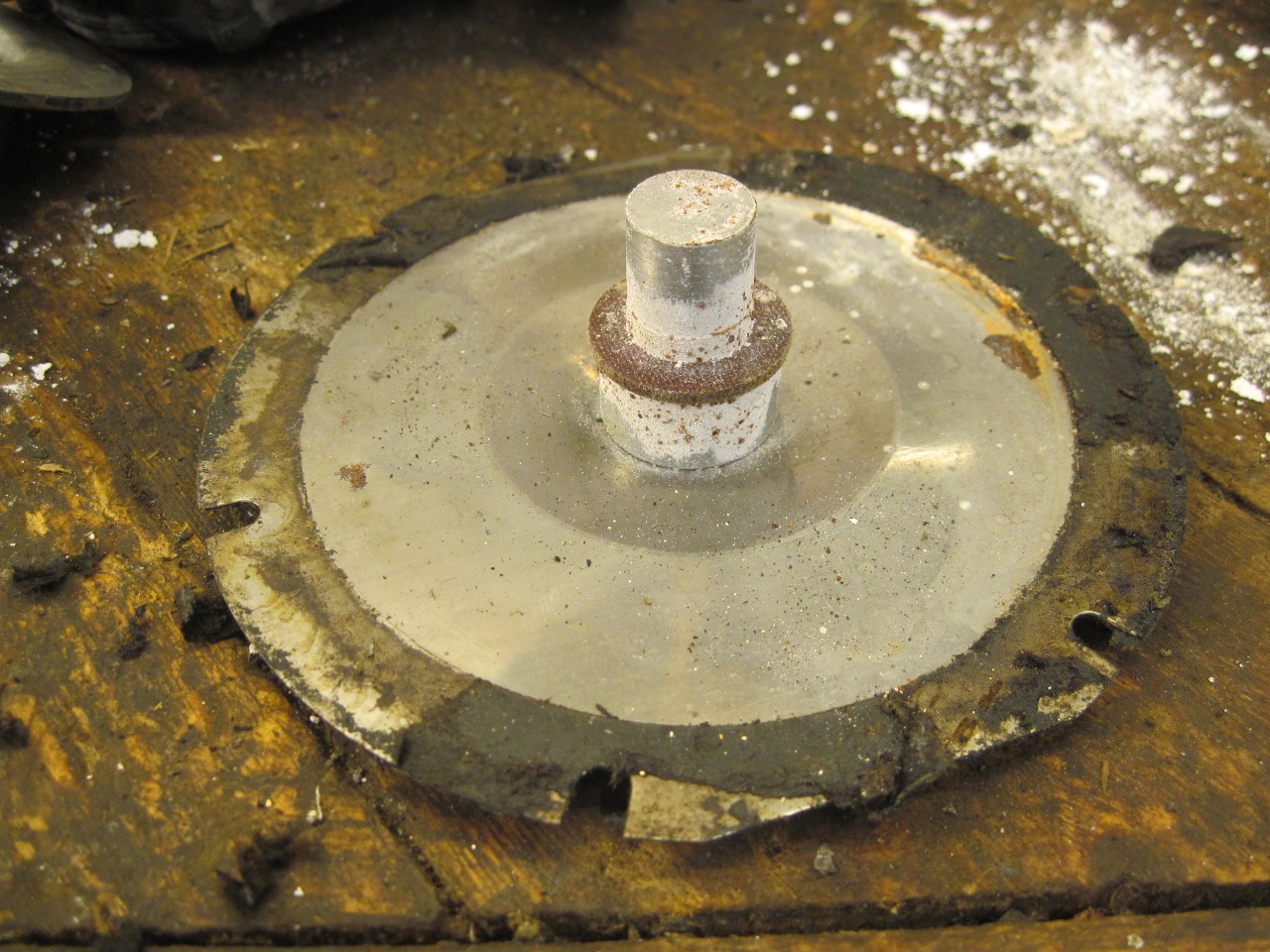
There
are two adjustments on the horns. First, there is a threaded plug
that can limit how far the diaphragm slug can move. There is also
a small screw (left-handed, oddly) that can move the fixed side of the
contacts a little. Lucas suggests that this is to account for
wear. I measured the positions of the plugs and screws so they
could be put back in their original positions.
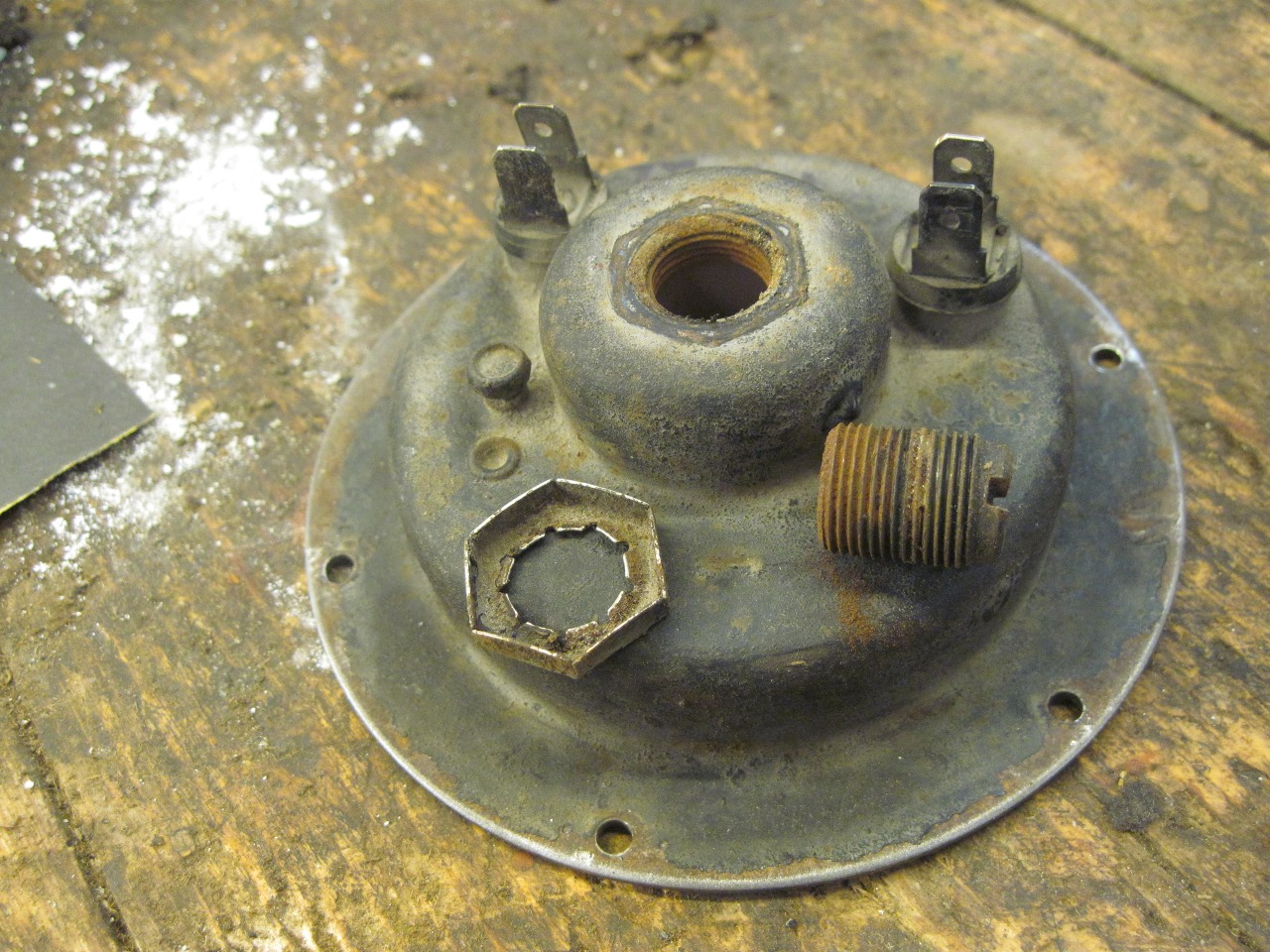
On
the unit with high resistance, the problem was simply dirty contacts.
Pulling a little strip of 400 grit abrasive paper through them
fixed that right up. The other horn just had corrosion crud on
the slug, binding it up. I cleaned the insides, blasted the
outsides, and made some new gaskets.
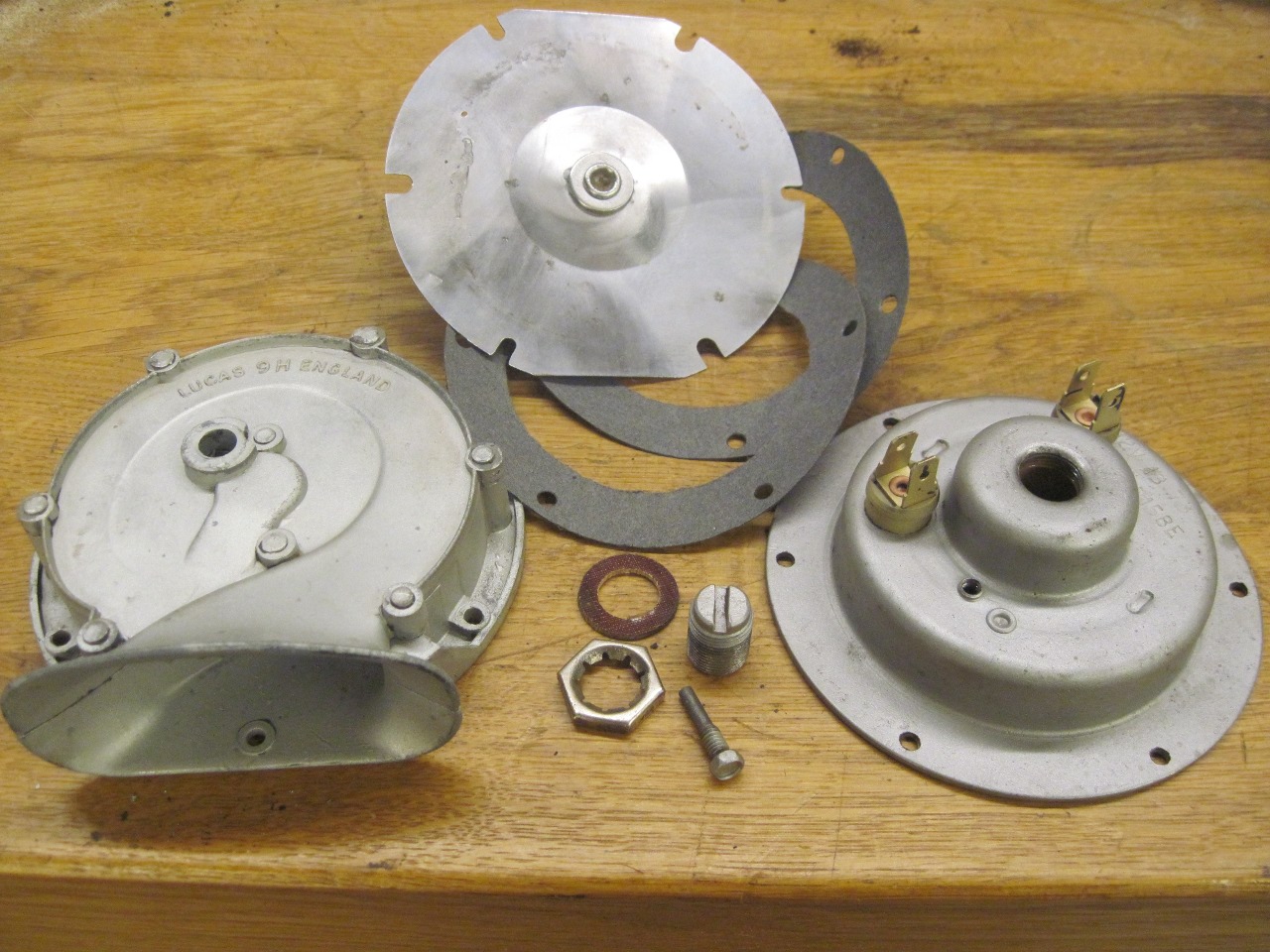
Then
powder coated the casting, and since I fretted a little about high
temps on the coil wire insulation, just primed and painted the other
half. This is when I realized that one of the horns was not
original to the car. Its date code was in 1975, so it must have
been an early replacement for the 1974 car.
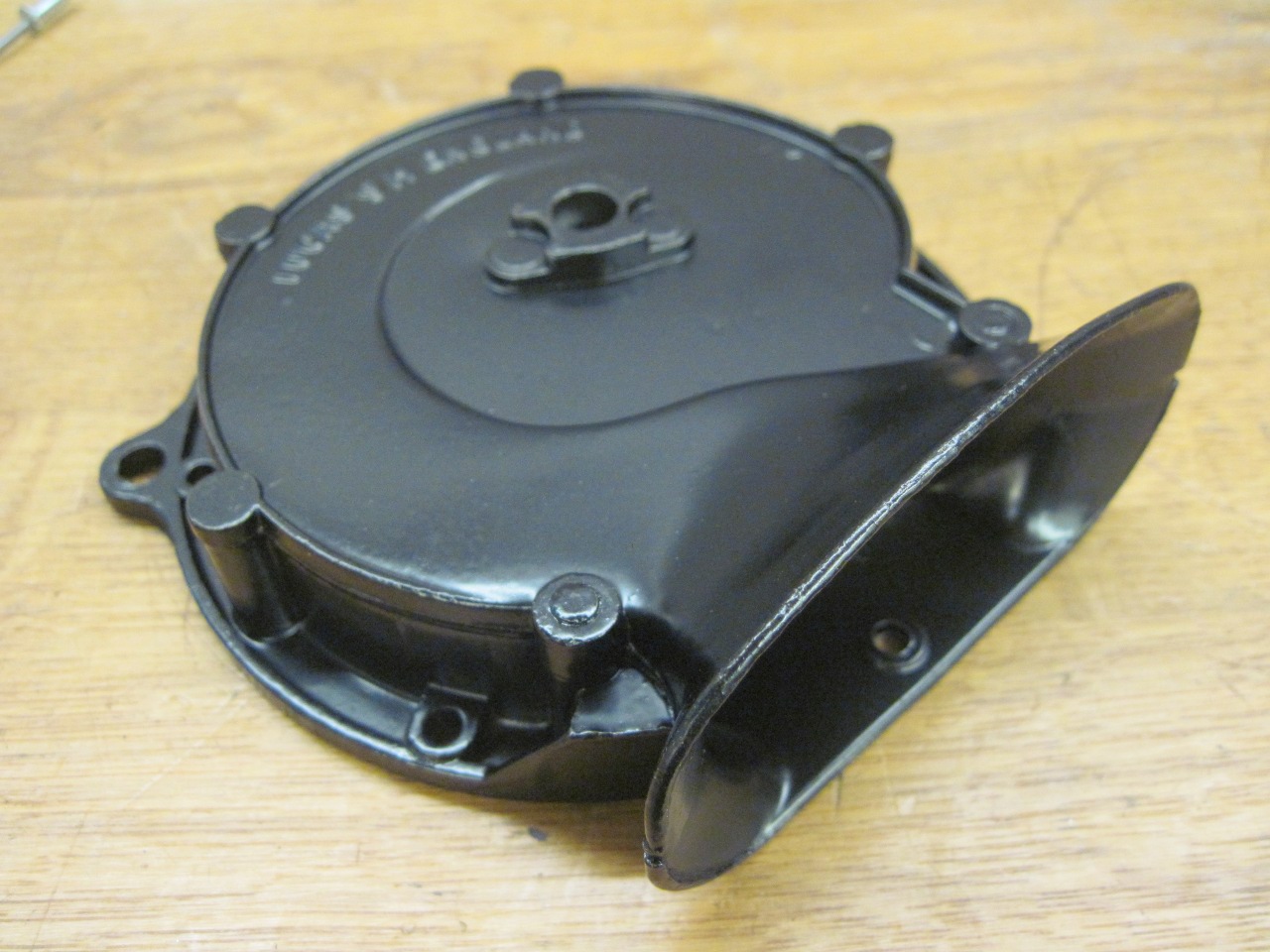
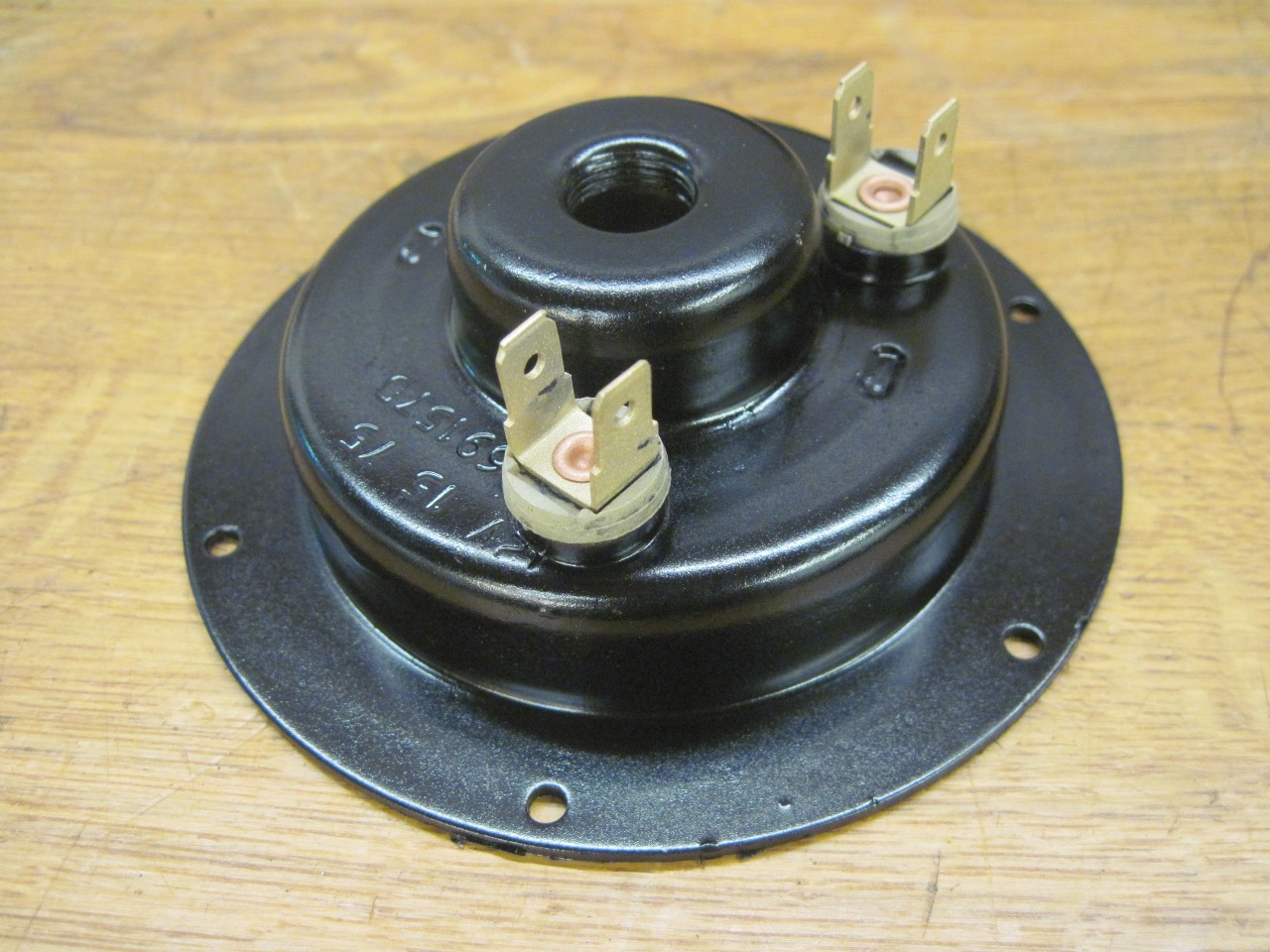
The
replacement horn might also explain the incorrect mounting bracket.
One of the brackets had a squarish hole for mounting the horn,
probably for a square boss on some other kind of horn. The lock
washer actually fell right into the larger hole. The solution was
to just make a correct backet. On the topic of lock washers, the
originals were external star washers--the kind often found on
electrical parts that use the car body as a ground. The
points of the star washer penetrate the paint for a good electrical
path. It is a strange choice for these horns since they don't
rely on the body for ground. In fact, the body of the horns are
totally isolated from the electrical path.
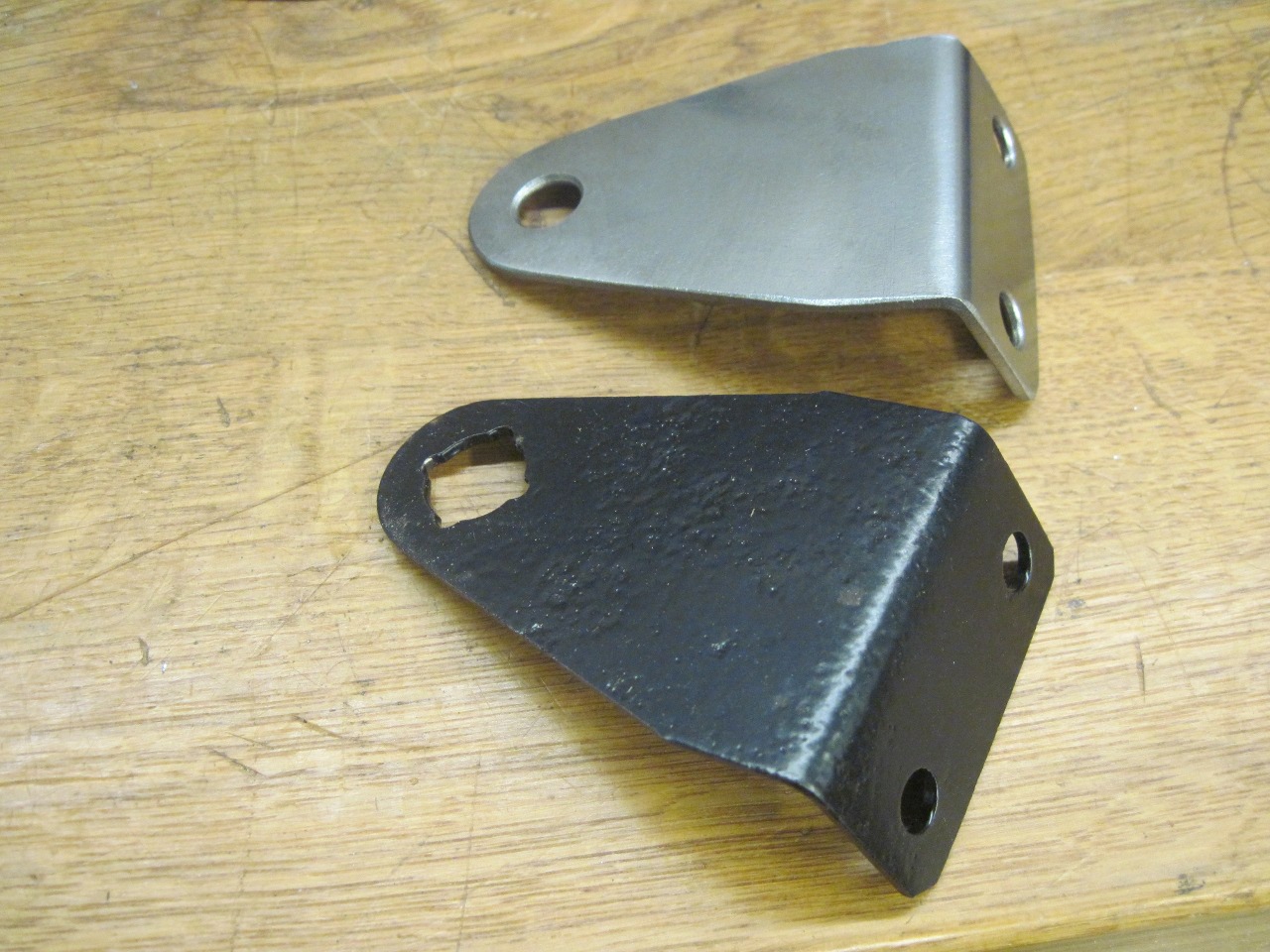
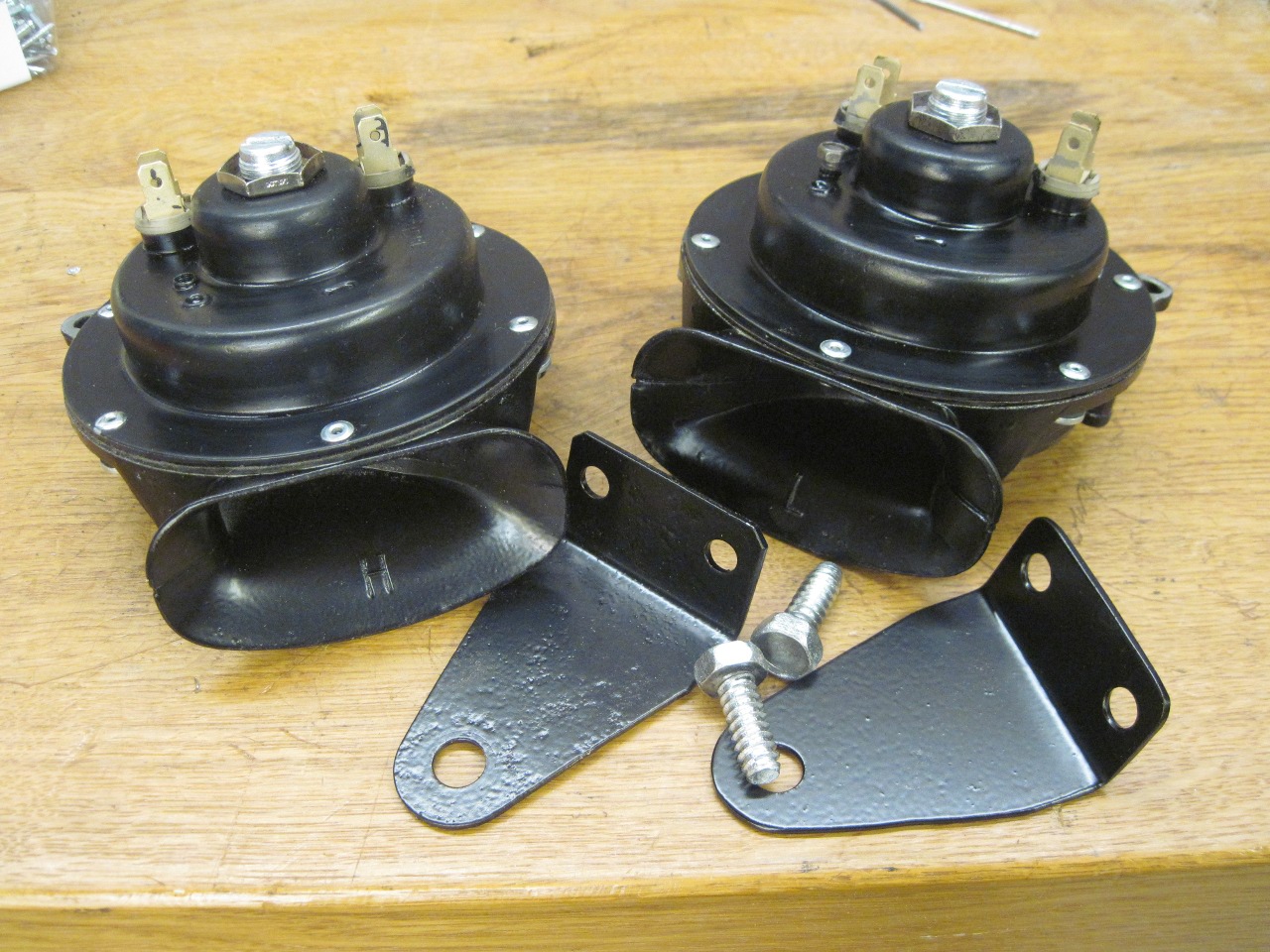
With
everything put back in its proper place, I tested the horns. They
both worked. I fooled with the adjustments a little, but where I
had them turned out to be about the best.
On the shelf with these dudes.
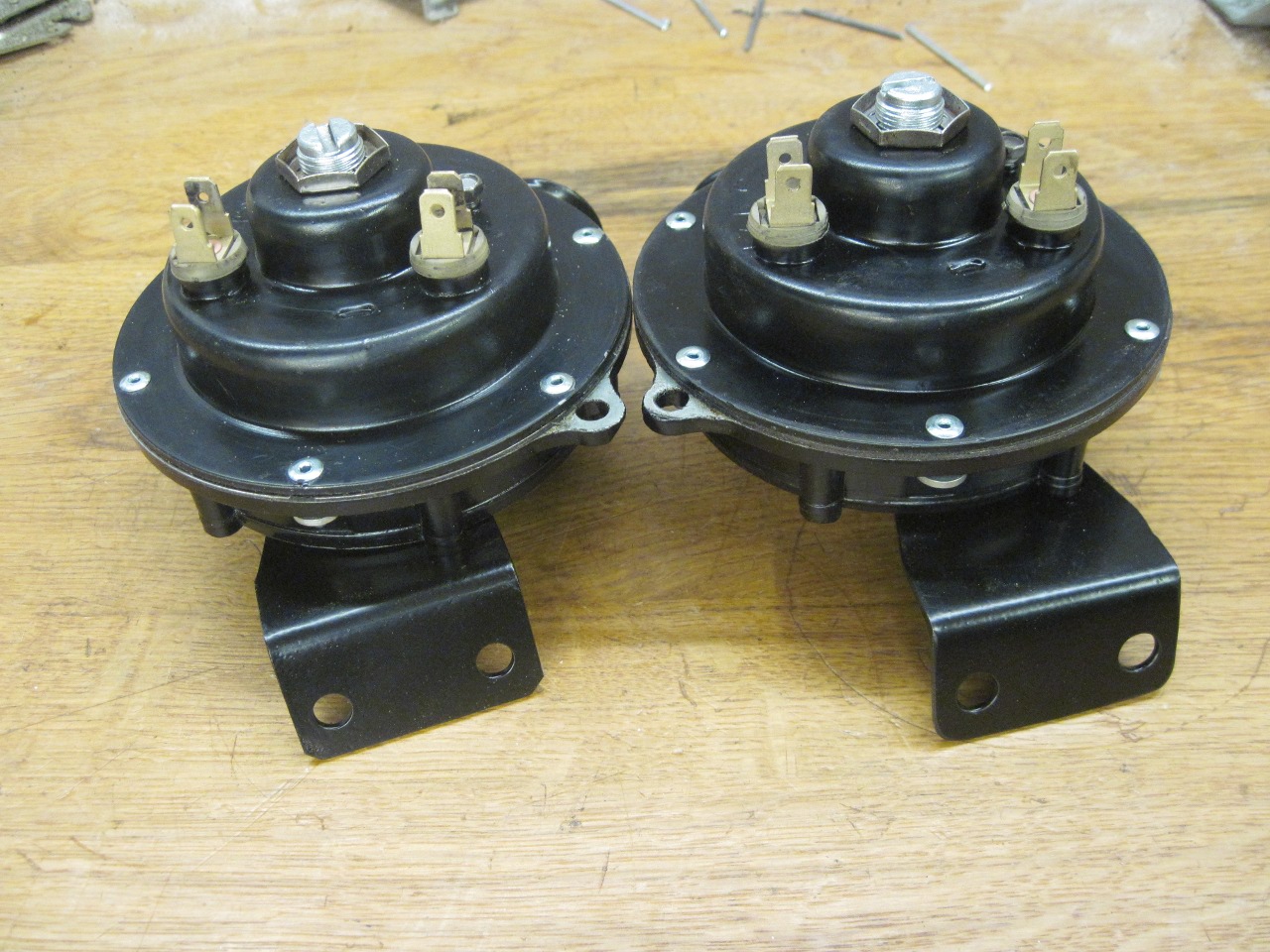
As
a side bar, when I was researching horns, I found many claims that
multi-tone auto horns were normally in the key of F. Apparently
Lucas didn't get that memo. Out of curiosity, I compared the
notes to a keyboard, and found that the low note was approximately G4
and the high note was close to B4, making it most of a G major chord.
The factory spec for the notes are 390-400 Hz and 490-500
Hz, respectively. None of the adjustments on the horns change the
note appreciably.
Comments to Ed at elhollin1@yahoo.com
To my other TR6 pages